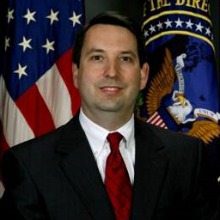
Charles Sowell is the senior vice president of the system and software engineering solutions business unit at Salient Federal Solutions–a post he took on in June 2013 after serving as deputy assistant director for special security with the Office of the Director of National Intelligence (ODNI).
But Sowell’s ascent is atypical of the normal trajectory for government contracting executives. He originally joined ODNI after having first worked in the public sector and has a lot to divulge about his earlier professional experiences.
“I highly recommend having both government and public sector experience,” Sowell said. “Having the advantage of a well-rounded perspective allows you to learn how to better serve customers. I spent five years at ODNI– it was a fantastic experience. It offered me a different vantage point on some of the challenges that government faces.”
WashingtonExec recently sat down with Sowell to discuss his take on the current state of security clearance process reform, cyber security, and the role of social media data sources as a tool for continuous evaluation.
Security Clearance
The government’s current security clearance process, which costs more than $1 billion a year, has a lot of potential for improvement according to Sowell “because it can now use new sources and methods to accurately weed out bad actors.”
He pointed to the Navy Yard shooting as evidence of the program’s current dependence on self-reporting between five and ten year reinvestigations for clearance holders at the top-secret level.
The self-reporting policy trusts individuals to report transgressions at their own discretion between reinvestigations.
“As you can imagine sometimes people don’t report themselves, particularly when the issues are egregious,” Sowell said. He noted the government’s impending release of reports, like the 120 day review — commissioned following the Washington Navy Yard shooting — and the reviews of the Departments of Defense and Navy, will likely provide useful insights into the government’s clearance priorities in 2014 and beyond.
“Overall I think we are going to see progress made in initiatives combating insider threats, and when we talk about insider threats we’re talking about a combination of counter intelligence, information assurance, and personnel security actions,” Sowell said. “I also think we are going to see a move to continuous evaluation in the personnel security community.”
The answer? A combination of insider threat and continuous evaluation initiatives. That’s where Salient comes in.
Sowell said he envisions a revision to the current security clearance process, which would more affordably leverage technologically relevant data sources and publicly available electronic information, like social media, to evaluate individuals more frequently at lower costs. “Salient’s strengths target the current market environment that we face: constricted budgets and government downsizing. That makes a difference,” Sowell said. “When we are looking at what is going to work, I think first and foremost strong fiscal leadership and a unified commitment from the ODNI, the Office of Personnel Management, the DOD (which has the largest number of clearance holders), the OMB, the Government Accountability Office, and Congress. Engagement with all these groups is just absolutely essential to changing this expensive and inefficient clearance process when it comes to transforming into a more agile and affordable system and catching bad actors real time.”
Sowell also proposed tracking social media as a data source to monitor personal conduct during the clearance process.
“There is a tremendous amount of information in publicly available social media, not information that’s behind a firewall or behind a password; but that any member of the public can find searching the internet,” Sowell said. “What we found is that that is about the best source of personal conduct information that is out there. Salient’s approach efficiently leverages existing government technology and security resources. We fill in the gaps in policy, technology, data sources, training, and governance which are key components to the continuous evaluation model.”
Cyber Security – Budget Reductions
The most important concern with cyber security at the moment is shrinking federal budgets, which limit firms’ abilities to develop capabilities, though Sowell said the reductions aren’t all that bad.
“Our strategy includes both artificially intelligent technologies and top industry cyber professionals – all laser focused on predicting, preventing, and persisting against cyber incidents,” Sowell said. “We see success in cyber security more as a journey and not a destination because we don’t believe any solution is 100% secure. When the adversary strikes (and they will inevitably strike – over and over again) we are ready.”
“On the pro side – shrinking budgets make us more carefully scrutinize the way we spend every dollar so that we ensure we are getting the best return on our investments. The price of not developing proactive security and risk assessment strategies based on industry best practices and continuous monitoring is far greater than the challenges we face properly allocating the budget dollars we have,” Sowell said. “It comes down to the old saying pay me now or pay me later.”


